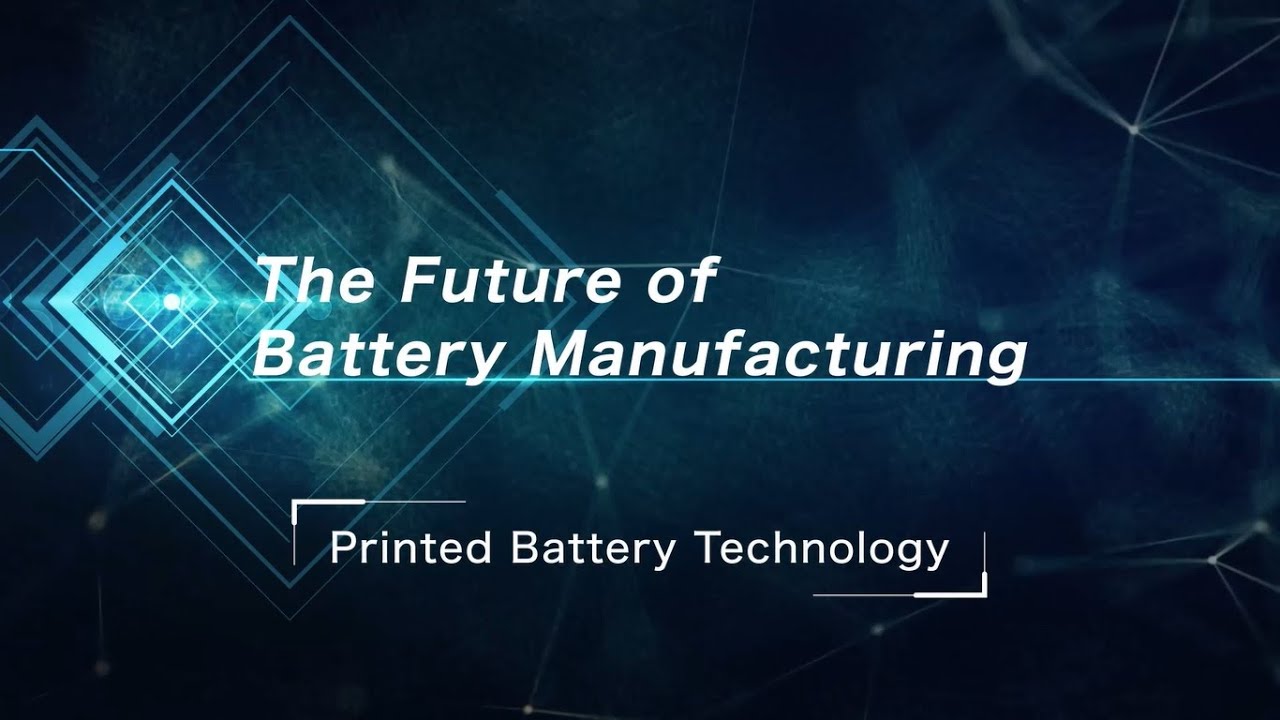- Home
- Technology
- Ricoh's Technology
- Digital Printing of Lithium-Ion Secondary Cells Using Inkjet Technology
Digital Printing of Lithium-Ion Secondary Cells Using Inkjet Technology
Background
The era of the IoT (Internet of Things) and wearables continues to expand, and everything is increasingly connected to the Internet as well as every device requiring a secondary cell. Accordingly, secondary cells need to come in a variety of shapes and sizes to match the way their host devices are designed and used. Conventional secondary cell production systems were designed to standardize production runs in large volumes; the standardized secondary cells restricted the design and performance of a device. To produce secondary cells in a variety of shapes and to meet differing performance specifications, you needed to have multiple production lines or spend a lot of time setting up dedicated manufacturing processes. There was also the issue of wasted electrode material; either excessive electrode material applied to unused portions or electrodes being thrown away when the electrode was cut out to fit a device.
 Cutting out electrodes from coated material
Cutting out electrodes from coated material
Solutions
Ricoh applied its inkjet technology to the production of lithium-ion secondary cells, enabling them to come in an almost limitless number of shapes and sizes. A digital inkjet system prints cell material only onto the area required. This allows secondary cells to be produced for many different applications in any shape or size and at the same time minimizes any wastage. The system will be especially useful in the production of secondary cells for IoT devices and wearables, which are expected to increasingly have diverse designs and performance requirements.
Technical Highlights
The components of electrodes (anodes and cathodes) and separators for lithium-ion secondary cells are incorporated into printable inks. Digital inkjet technology is then used to print them in layers allowing secondary cells to be produced in the right shape.
 Printing cell materials
Printing cell materials
1. Developing cell material inks for inkjet printing
In conventional secondary cell production, a highly viscous paste containing ceramic was applied onto a substrate. Ricoh has changed all that by developing a low-viscosity ink for inkjet printing. The development effort is still ongoing, producing ink versions of primary electrode materials on the market as well as special separators.
 Cell material inks
Cell material inks
2. Inkjet printing highly adaptable to shape and flexibility
To change the shape or position of an electrode, all you need to do is change the printing data.
The new system produces thinner films when compared to conventional systems thereby allowing the secondary cells to be bendable.
 Sample of electrodes being printed in many shapes including circles and triangles
Sample of electrodes being printed in many shapes including circles and triangles
3. Functions enhanced through a hybrid scheme of the new and more conventional systems
Inkjet printing is a contactless printing process, and thereby dramatically reduces the risk of damaging the object. For instance, inkjet printing can be used after an electrode has been coated with the conventional method. That way, a functional material for safety can be added without damaging the electrode.
 Hybrid scheme combining the new and conventional methods
Hybrid scheme combining the new and conventional methods
Ricoh's vision
Ricoh has been working on inkjet technology for more than 40 years and continues to do so. Ricoh's development extends beyond traditional display printing where paper and non-paper materials are used, but also in the area of functional printing where new value is created by combining multiple printing technologies involving materials and processes.
The new technology embodies functional printing by enabling production of secondary cells of freely designed shapes through digital printing of functional materials. Ricoh will continue to produce new value, as illustrated by the development of secondary cells for IoT devices and wearables.
Sorted by : field “Inkjet” “Materials”
